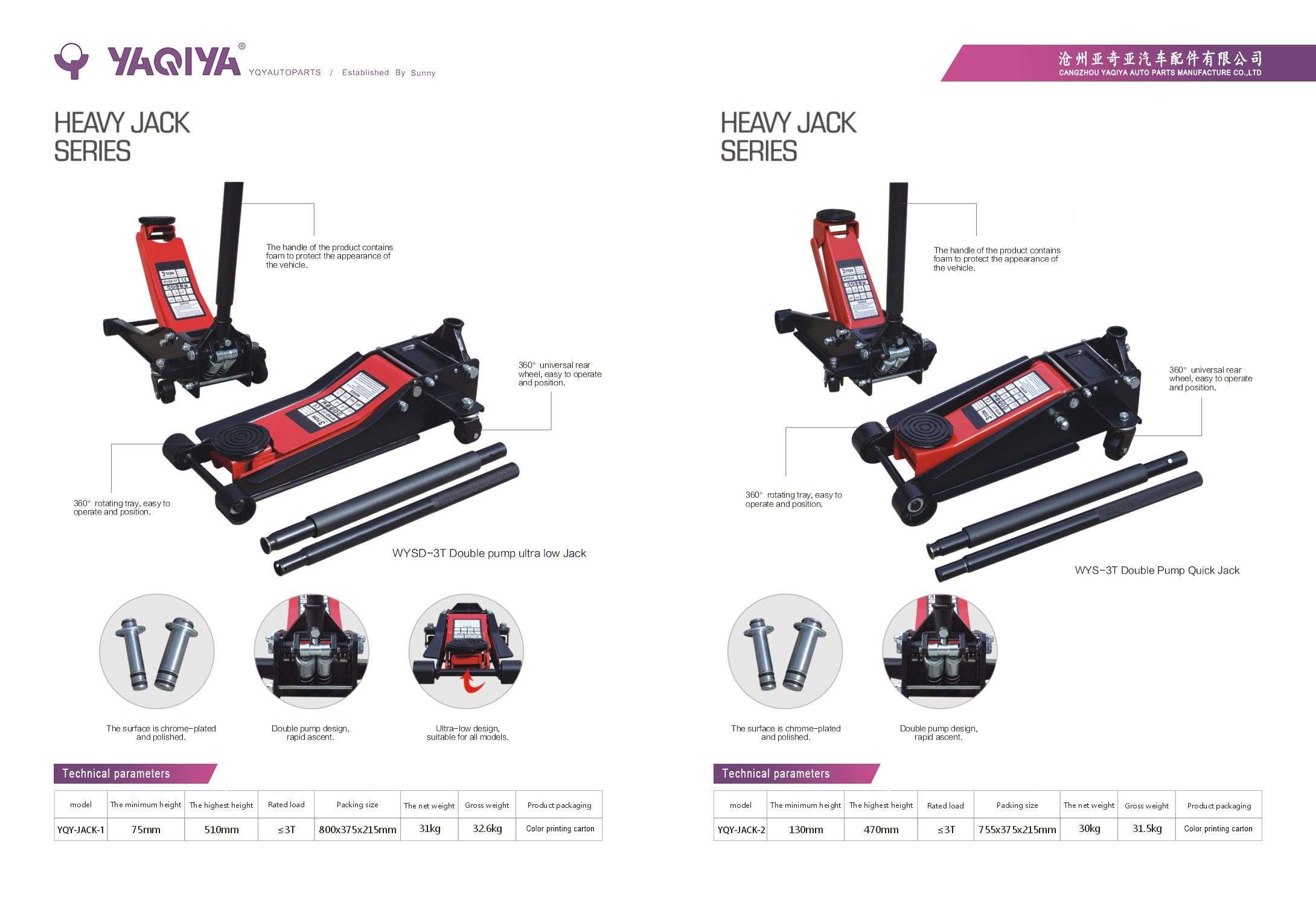Main features
Efficient lifting force: Hydraulic jacks can generate great lifting force and can easily lift several tons or even dozens of tons of weight.
Good stability: Due to the characteristics of the hydraulic system, hydraulic jacks are very stable during lifting and lowering.
Simple structure: The structure of the hydraulic jack is relatively simple, easy to use, and relatively easy to maintain.
Various types: Common hydraulic jacks include bottle type, vehicle-mounted type, ultra-thin type, etc., which are suitable for different application scenarios.
Working principle
The working principle of the hydraulic jack is based on Pascal's law, that is, the pressure of the fluid is equal everywhere in a closed container. When the hydraulic oil is pressed into the hydraulic cylinder by manual or electric pump, the oil pressure acts on the piston, generating an upward thrust, thereby lifting the heavy object. The specific process is as follows:

Pressure: The hydraulic pump is driven manually or electrically to press the hydraulic oil into the hydraulic cylinder.
Lifting: After the hydraulic oil enters the hydraulic cylinder, it pushes the piston up, driving the top plate or other load-bearing structures to rise together, thereby lifting the heavy object.
Locking: Some hydraulic jacks are equipped with a mechanical locking device, which can fix the heavy object after lifting to the required height to ensure safety.
Release pressure: After use, the hydraulic oil is returned to the tank by releasing the valve, the piston sinks, and the weight returns to its original position.
Hydraulic jacks are widely used in various occasions where heavy objects need to be lifted, such as lifting vehicles during car repairs to change tires or perform repairs, and lifting and supporting heavy structures in construction projects.


